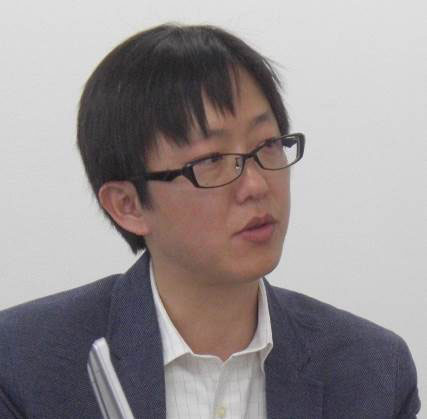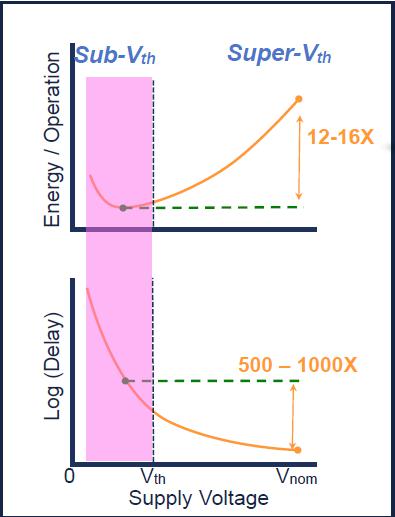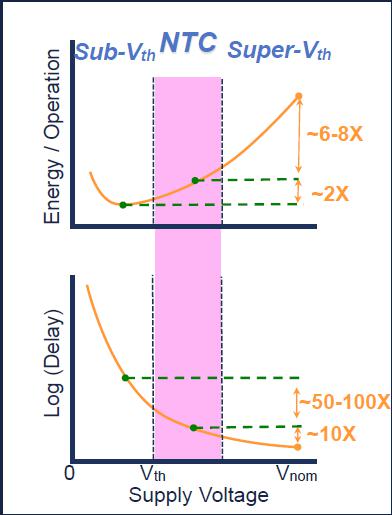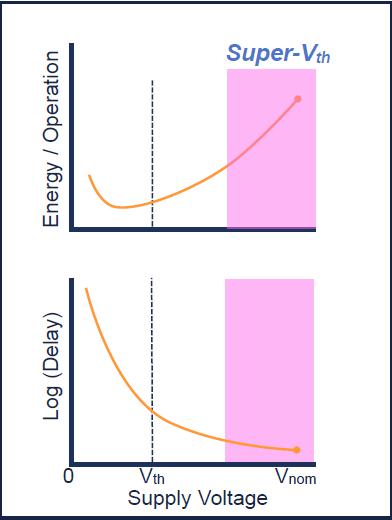
- Shi Youhua, Associate Professor (March, 2013)
Enormous Energy Consumed by Electronic Devices
As recently as a few years ago, it was common to see many people reading newspapers or books on commuter trains. However, in the blink of an eye, these scenes have disappeared and been completely replaced with train cars full of people holding smartphones and tablets.
A report from the GSM Association (GSMA), an international industrial association composed of mobile operators, predicts that by 2020, the number of devices connected to the Internet will reach 24 billion. The circuits embedded in these devices consume a huge amount of energy. If we could reduce the power required to operate such electronic circuits, we would be able to drastically reduce worldwide energy consumption.
The study I am working on is to design circuits that operate properly with a low power supply.
Tactics to Reduce Power Consumption
Limiting the voltage is an effective way to achieve low-power technology that reduces the energy consumption of electronic circuits. There are three methods of doing this.
The first is to adjust the voltage in accordance with the load on the circuit. At present, a high voltage is applied to the circuits consistently to cope with the peak process load. If we could limit the voltage whenever the load is low, this should reduce the power consumption. In order to adjust the voltage with this method, we have to predict what kind of process the circuit will handle next and how much load will be imposed. However, this is very difficult to predict.
The second is to restrict the electric current to the unused processors. Generally, electronic devices are embedded with multiple processors. When the process volume is large, all the processors are used; when the volume is small, only some of them are used. Therefore, we should supply electricity only to the working processors to save energy. If we do this, however, the data stored in the memory will be lost when the supply of electricity ceases. How to build the memory is a significant issue with this method.
The third method, which I focus on the most, is to operate the circuit with a low voltage overall. The more you increase the supply voltage to a circuit, the faster the process speed becomes (Figure 1, lower right), but at the same time, the energy consumption also increases (Figure 1, upper right). If we operate a circuit with the voltage range shown in the center of Figure 1, we can reduce the energy consumption without significantly sacrificing the process speed.
However, circuits become unstable when the voltage is reduced. This unstable state means an increased rate of errors. The rate of errors varies depending on the usage environment; for example, it may operate normally under normal conditions but become prone to errors in high temperature conditions.Current electronic circuits have adopted designs that apply a high voltage in order to suppress errors in any conditions.



Figure 1: The impact of voltage variation on energy consumption and delay. In the upper graphs, the horizontal axes indicate the voltage and the vertical axes indicate the energy required to process one cycle. In the lower graphs, the horizontal axes indicate the voltage and the vertical axes indicate the delay in process (decrease in process speed). As shown in the graphs on the left, if we operate an electronic circuit with a low voltage, the energy consumption is low but the speed decreases.
To cope with this challenge, I have changed my way of thinking and worked on a design that restores any errors that should occur. I have incorporated a circuit that detects errors within the base circuit, and added another circuit that restores the errors. Thus, I have developed a circuit with a low error rate and a speed that is not so slow, which also achieves low voltage for low power consumption.
Aiming to Leverage a Small Amount of Power to Realize No Power
In recent years, we have seen the advance of a technology called “energy harvesting.” This technology allows us to convert small amounts of kinetic energy into electricity. For example, we can generate power from tiny forces, such as the pressure applied to computer keyboards and the vibrations generated when people walk. This mechanism has already been introduced in full scale in a football stadium, where power-generating mats are placed on the floor of the stand and electricity is harvested from the kinetic energy of supporters jumping.
Since the amount of electricity generated by energy harvesting is so small and fluctuates over time, it can only supply unstable power. At present, only about 30% of the total electricity generated by energy harvesting is actually utilized. If we develop circuits that convert vibration energy more efficiently or that use the tiny amount of harvested power more effectively, we can make use of the electricity generated by these methods more efficiently.
I am planning to design a circuit that can be operated without electricity from outlets or batteries by utilizing the energy generated by energy harvesting. For example, if we imagine a sensor circuit that measures something at a specified timing, then it will be easy for us to predict when to supply electricity to it. Utilizing this kind of prediction will allow us to automatically adjust the voltage applied to a circuit. If the error restoration circuits I am studying are incorporated into such sensor circuits, it will become possible to operate them with a considerably low level of power.
Devices that employ sensor circuits include surveillance cameras and observational equipment for temperature and other natural phenomena. Since there are many of these devices and their life cycles are long, we can expect a significant energy saving effect if we are able to operate them with the power obtained from energy harvesting. In addition, applying this technology to medical devices (which have to be implanted and require surgery to replace the battery) will help to drastically reduce the burden on patients.
My dream is to use devices such as smartphones and tablets without charging. Someday, such devices can be charged by the motion generated while they are stored in a bag, and you will not have to charge them from outlets. I am going to continue with my research to make this happen as early as possible.
Interview and Composition: Kaori Oishi
In cooperation with: Waseda University Graduate School of Political Science J-School










